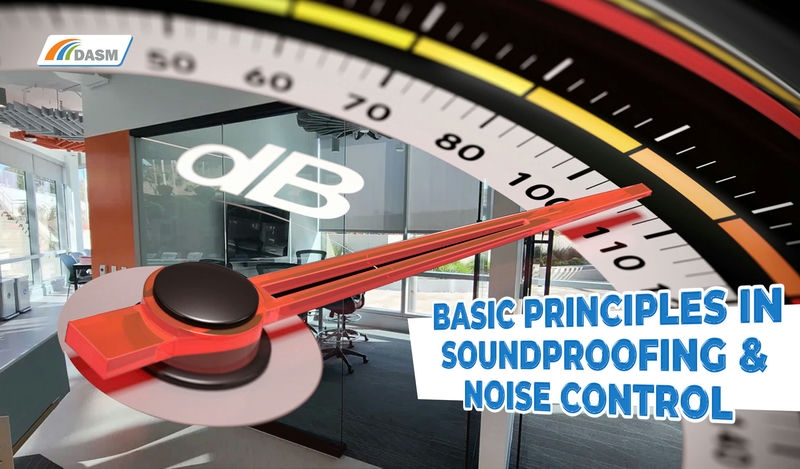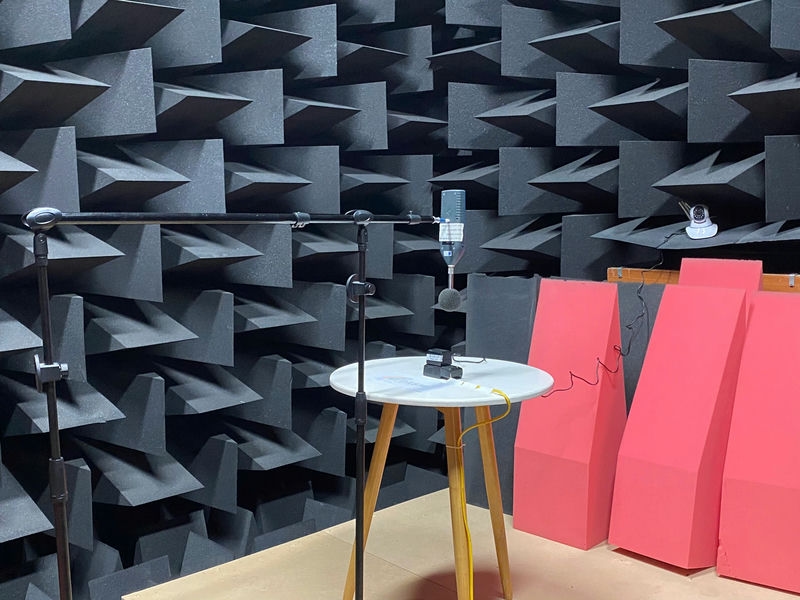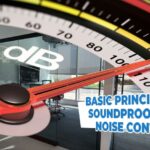Do you know basic principles in sound insulation & noise reduction? It is essential to understand several fundamental acoustic laws and principles. These are also the principles that DASM applies in noise measurement, acoustic testing, evaluation, consulting, and designing efficient noise control solutions for projects.

Reducing noise by 10 decibels (dB) ≈ Reducing perceived loudness by about 50%
Many clients come to DASM wishing to “reduce noise by half” but often misunderstand the decibel scale. In reality, reducing noise perception by half requires a reduction of around 10 dB — not a 50% reduction in the dB value.
For example:
A noise source of 80 dB → To make it sound “half as loud” → Reduce it to about 70 dB, not 40 dB.
Doubling the mass of a noise barrier increases its Sound Transmission Class (STC) by approximately 5 dB
A heavier and thicker barrier naturally blocks sound transmission more effectively.
According to the Mass Law, every time the surface mass of a barrier is doubled, the STC rating typically increases by about 5 dB.
As mentioned above, a 10 dB reduction corresponds to a perceived 50% noise decrease — so a 5 dB improvement is already very significant.

Breaking the line of sight: The noise barrier should be twice as high and twice as long as the noise source
When using barriers to reduce noise, especially in outdoor environments (construction sites, sports facilities, etc.), the barrier should be placed as close as possible to the noise source and should be tall and long enough to block direct sound propagation.
If you can see the noise source → you will hear it.
If the barrier is only the same height or width as the source, sound will simply travel over and around it.
Sealing gaps and joints significantly reduces sound transmission
Sound can leak through even small openings such as door gaps, ceiling joints, ventilation ducts, and service penetrations.
By properly sealing these gaps, noise transmission into adjacent spaces can be significantly reduced.

Doubling the distance from a noise source reduces the sound level by about 6 dB (in open, non-reflective environments)
According to the Inverse Square Law, in outdoor free-field conditions (with no reflective surfaces), every time the distance from the noise source is doubled, the sound level decreases by approximately 6 dB.
This explains why sound becomes quieter as we move farther away from the source.
Adding sound levels (dB) is logarithmic, not arithmetic
When multiple noise sources are present, their sound levels do not add directly.
For example:
45 dB + 45 dB ≠ 90 dB
The correct combined level is 48 dB, because decibels follow a logarithmic scale.
General rule when combining noise sources:
0–1 dB +3 dB
2–3 dB +2 dB
4–9 dB +1 dB
≥10 dB +0 dB
These are some of the essential principles in soundproofing and noise control.
If you have any questions or require support in diagnosing or resolving noise issues, please contact DASM.
Our experienced acoustic experts are ready to provide internationally standardized measurement, noise survey and evaluation, and consulting services.







